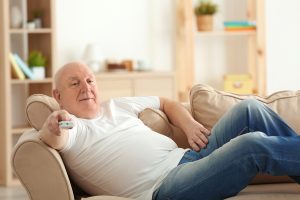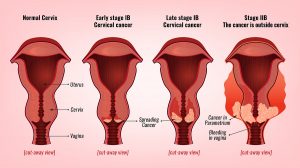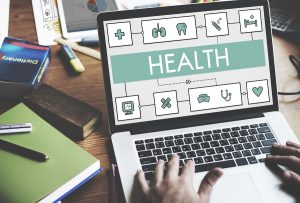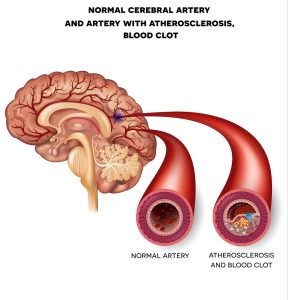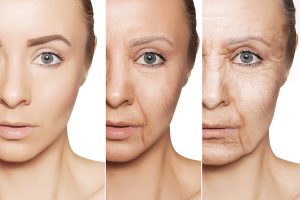Dr. Thierry Hertoghe, an endocrinologist from Belgium, stated that Alzheimer’s disease is treatable with hormones. This talk was part the 26th Anti-Aging Conference of the American Academy of Anti-Aging Medicine in Las Vegas (from December 13 to 15, 2018).
First of all, Dr. Hertoghe treated many Alzheimer’s patients himself and noted that they often have multiple hormone deficiencies. Secondly, common deficiencies affect thyroid hormones, human growth hormone, estradiol for women and testosterone for men. But even vasopressin and oxytocin are hormones that may be lacking. Third, after doing thorough blood tests to assess hormone levels, Dr. Hertoghe replaced what hormones were missing. Finally, many Alzheimer’s patients got their energy, muscle strength and memory back.
In the following I am summarizing what Dr. Hertoghe told the audience about the various hormones. Alzheimer’s disease is treatable with hormones. Later I provide the hormone doses that Dr. Hertoghe uses for replacement.
Progressive memory loss
Generally, patients who develop Alzheimer’s disease start losing short-term memory first, but in time they will also lose long-term memory. Often this disease process starts in the 60’s as age-associated cognitive impairment. In the 70’s it may progress further to mild cognitive impairment, only to take off in the 80’s as Alzheimer’s disease. The astute clinician may order some screening blood tests in the 60’s and 70’s. In a male low testosterone, low DHEAS and low thyroid hormones may be present. Certainly, blood tests will show this readily. Frequently, in women low estradiol, low thyroid and low DHEAS may also be present. The reason this is important is that simple hormone replacement can return a person back to normal. Yes, this is right: hormone replacement can bring a person with age-associated cognitive impairment or mild cognitive impairment back to normal! In other words, Alzheimer’s disease is treatable with hormones.
Hormones important to monitor with Alzheimer’s disease
There are 6 hormones that are important for memory restoration in Alzheimer’s patients: IGF-1 (and growth hormone), thyroid hormones, estrogen and testosterone, vasopressin (and oxytocin) and pregnenolone. However, as Alzheimer’s patients often have sleep problems, another important hormone is melatonin.
Oxytocin to calm down aggressive Alzheimer’s patients
Notably, Dr. Hertoghe found that Alzheimer’s patients often are restless and can be aggressive. This makes it difficult to care for them in a home. Oxytocin is the hormone of trust, affection, sociability and concerns about others. It calms down aggressiveness. But with oxytocin treatment the Alzheimer’s patient feels better, becomes friendly, cooperative and warm-hearted.
As an illustration Dr. Hertoghe gave an example of one of his 80-year old patients with aggressive Alzheimer’s disease. She became unmanageable for her non-married son and other contacts. 5 IU of oxytocin sublingually changed this woman into a friendly, compassionate, warm-hearted woman, and the aggressiveness disappeared completely.
Insomnia in Alzheimer’s patients
About 45% of Alzheimer’s patients develop “sundowning”. When the sun goes down they start getting hyperactive, develop unacceptable behaviors and they become restless. Research papers showed that blood melatonin levels are low in these patients. Indeed, this is why they respond very well to small amounts of melatonin at bedtime. As a conclusion, within only a few days of starting this, their sundowning disappears, and they become easier to look after.
Dr. Hertoghe provided material from several research papers that showed that Alzheimer’s patients are often deficient for melatonin. Replacement with varying doses of melatonin solved even more complicated insomnia problems.
Melatonin is a powerful anti-oxidant. Interesting animal experiments have shown that melatonin has memory-enhancing properties. Researchers believe that melatonin improves the extracellular senile plaques with amyloid-beta peptide accumulation (first of 2 Alzheimer’s lesions). In addition melatonin also decreases the intracellular neurofibrillary degeneration tangles, the second of the two specific Alzheimer’s lesions.
IGF-1 and human growth hormone
Several studies have shown that Alzheimer’s patients have a significant drop in IGF-1 levels and growth hormone levels. This affects their short-term and long-term memory. Serum IGF-1 has an inverse correlation with cognitive impairment. Dr. Hertoghe said that IGF-1 treatment in Alzheimer’s patients increases their brain volume, increases the functional network of neurons in the brain and increases memory.
Brain atrophy in Alzheimer’s patients from chronically depleted IGF-1
Dr. Hertoghe showed a slide of a normal brain with a view from the outside and a cross section view of the brain. The same slide contained the view of an Alzheimer’s patient’s brain. It showed brain atrophy resulting in a much smaller brain and the cross section displayed an increase of the hollow spaces (e.g. the third and forth ventricle). He stressed that in his view the brain shrinkage of Alzheimer’s patients is due to prolonged low levels of IGF-1. This in turn is due to a lack of production of human growth hormone.
With IGF-1 treatment the serum IGF-1 was increasing and the cognitive function in older adults recovered. Dr. Hertoghe provided many literature citations to support this, which I will not repeat here.
Case report of a male patient with Alzheimer’s disease
Dr. Hertoghe presented one of his patients with Alzheimer’s. Lab tests showed that he had deficiencies of thyroid hormones, DHEA and testosterone. But despite replacement of these hormones he remained severely affected with Alzheimer’s. He did not remember his own name, could not go to the toilet on his own, spoke only a few words and suffered from severe fatigue. He received 4 injections around his eyes with IGF-1 and mesotherapy from his doctor (described below) with human growth hormone and IGF-1. Within a few weeks he had a complete reversal of his cognitive decline. He could return to his professional driving career doing halftime work with a delivery van in the city. He could read a newspaper and understood what he was reading. Alzheimer’s disease is treatable with hormones.
Thyroid hormones
According to Dr. Hertoghe thyroid hormones help to establish short-term and long-term memory and treat the apathetic depression in Alzheimer’s patients. Many Alzheimer’s patients are hypothyroid.With this deficiency they have swollen lower eyelids, a puffy face and paleness of the face. In a 1990 study a group of Alzheimer’s patients had 26% lower T3 levels when compared to normal controls. Many patients with hypothyroidism have memory loss, before their deficiency is corrected. Dr. Hertoghe stated that 13% of all dementia cases are reversible by proper thyroid hormone treatment.
Estradiol can improve long-term memory loss
Research showed that estradiol could improve long-term memory in dementia and Alzheimer’s disease cases. Many female Alzheimer’s patients are deficient in estrogens. If they do, they have dry eyes, a pale face and thin, dull hair. In a 2005 study 33 control women were compared to 48 women with Alzheimer’s disease. The estradiol levels in the Alzheimer’s disease group showed significant depletion compared to the normal control group. There was no significant difference found with regard to progesterone, testosterone and LH&HSH levels. Another study showed that in cerebrospinal fluid of women with Alzheimer’s disease the estradiol level was significantly reduced while the beta-amyloid levels were significantly increased.
Dr. Hertoghe reviewed several studies that showed that symptoms of Alzheimer’s disease disappeared with estradiol supplementation. Both memory and mood responded to the treatments.
Men with Alzheimer’s disease are often testosterone deficient
Testosterone is important for long-term memory. Men in andropause report erectile dysfunction, general weakness and memory loss. The physician needs to be aware that the patient may be starting to develop Alzheimer’s disease. Dr. Hertoghe showed a slide based on a publication, which stressed that testosterone enhances memory. It increases brain blood flow and thickens the myelin sheets. Testosterone increases dendrite and synapses and in addition decreases amyloid beta-peptide production. Neurotoxicity is also reduced. The end result is improvement of Alzheimer’s in males with testosterone replacement.
Pregnenolone improves short-term memory
Pregnenolone gets synthesized in the brain, spinal cord and peripheral nerves. Dr. Hertoghe said that pregnenolone is a neurostimulating “neurosteroid”. Pregnenolone concentrations in brain tissue are about 25- to 35-fold higher than in the blood stream. Some cases of Alzheimer’s disease can come from a lack of pregnenolone and pregnenolone sulfate. Patients who have Alzheimer’s because of a lack of pregnenolone have blood levels that are 2.5-fold lower than pregnenolone levels in normal controls. When these patients are treated with pregnenolone, their memory improves. The mechanism of the effect of pregnenolone is by increasing acetylcholine by more than 50% in the hippocampus. It also protects the hippocampus from glutamate and amyloid beta. Pregnenolone improves short-term memory over a period of 3 to 4 months of treatment.
Vasopressin improves short-term and long-term memory loss
Postmortem studies on Alzheimer’s patients showed that there is decreased vasopressin in the brain cortex. In patients with alcoholic dementia (Korsakoff psychosis after recovery) there was decreased vasopressin in the cerebrospinal fluid. Often patients with diabetes insipidus have decreased vasopressin and are in danger of developing dementia. If not treated, they develop short-term and long-term memory loss. When treated with vasopressin or Desmopressin their memory recovers within 4 hours of starting therapy. Younger patients (50 to 73) do better with memory recovery than older patients (74 to 91).
Treatment details of hormone replacement for Alzheimer’s disease
Before hormone treatments are given to a patient it is important to do a battery of blood tests. This will help the physician to identify the missing hormones in a particular patient. Each of the missing hormones are then administered separately.
Oxytocin
This hormone can be given sublingually or intranasally. Sublingually 5-10 IU are given daily. With the sublingual approach 1 or 2 sprays are given daily. Each spray contains 8 IU of oxytocin. Improvement is visible within 2 to 5 days. A full recovery takes 2 to 3 months.
Melatonin
Most patients in the higher age group do no longer produce their own melatonin. With the oral route 1-3 mg are given every night before going to bed. An alternative is to use sublingual tables 0.5mg to 1.0mg at bedtime. The first improvement can be seen 2-5 days after the start of replacing melatonin, the full impact takes about 2-3 months from the start of the treatment.
IGF-1 and human growth hormone
Replacement of IGF-1 can be done by injecting IGF-1 or human growth hormone (HGH). HGH stimulates the liver to produce IGF-1. IGF-1 is somewhat cheaper than HGH. When IGF-1 is used, 0.3mg to 1mg is injected at bedtime. Progress is slow; the first improvement is visible at 2-4 months, it takes up to 24 to 36 months for a full recovery.
For severe memory impairment with Alzheimer’s, the doctor does a double treatment approach with both IGF-1 and HGH: first subcutaneous IGF-1 injections around the eyes 4 times per day (0.01mg each). Secondly, at the doctor’s office the doctor administers mesotherapy injections with 1mg of HGH and 1mg of IGF-1 and vasodilators 3 times per week. Two weeks later the doctor administers another course of mesotherapy. He may repeat this twice in 14-day intervals. Now the interval increases to monthly therapy for 3 months and finally every 3 to 4 months. The patient can use IGF-1 nose drops instead of subcutaneous IGF-1 injections.
Thyroid hormones
Dr. Hertoghe prefers desiccated animal thyroid hormone replacement as the T3/T4 ratio is best matched to what the ratio is in humans. Depending on the severity of thyroid hormone deficiency the patient takes 30-150mg of thyroid hormone every morning. Dr. Hertoghe starts with a low dose and slowly increases the dosage. Clinical progress is very slow. It takes until the second month before the first improvement takes place. Full improvement can take 8-12 months.
Estradiol
Replacement of estradiol in postmenopausal women with Alzheimer’s disease received ether more than 0.1mg per day or 0.625mg of conjugated equine estrogen daily. In both cases there were improvements of their memory and improvement on the Hamilton depression scale.
Dr. Hertoghe’s preferred way to treat postmenopausal women with Alzheimer’s disease is as follows. The first 25 days of each month he gives them 1-2mg of oral estradiol valerate each day and 100mg of micronized progesterone. If they prefer an estrogen cream, he gives them 1-3mg per day transdermal estradiol and 100mg micronized progesterone capsules.
The first improvement is visible after 2-4 months; there is further improvement the next 8-12 months.
Testosterone
There are two methods of how to do hormone replacement with testosterone, either by injection or as transdermal cream. The injection treatment uses 250mg of testosterone enanthate or cypionate every 2 -3 weeks. The patinet can also self-administer testosterone enanthate (50mg twice per week) for a more even blood level of testosterone. The transdermal approach involves 100-250mg transdermal, nanoliposomal testosterone daily.
The memory will improve 2-4 months into replacement therapy. The full improvement takes 8-12 months.
Pregnenolone
The replacement therapy is 100mg per day in the morning for the first 4 months. Then there is a dosage reduction to 50mg daily. Studies have shown that 30mg of pregnenolone is not enough to treat memory loss. Short-term memory improved after 3 to 4 months in about 75% of patients.
Vasopressin
The best vasopressin preparation to use is bio-identical vasopressin. It comes as 1 nasal spray with 10IU of vasopressin. Upon awakening the patient or caregiver applies 1-2 sprays into the nose. The patient receives the second dose 10 minutes before lunch by nasal spray.
Apart from hormones, lifestyle changes are also recommendable.
Conclusion
Who would have thought that Alzheimer’s disease could have anything to do with hormones? Dr. Hertoghe, the endocrinologist from Belgium did many hormone tests on Alzheimer’s patients and concluded that various degrees of hormone deficiencies can indeed cause Alzheimer’s disease. But what is more is that you can replace the missing hormones and see complete cures in patients with Alzheimer’s disease. Alzheimer’s disease is treatable with hormones. This is something conventional medicine can only dream of. At this point this hormonal approach is not yet mainstream medicine; but it would not be a surprise to me, if in 10 or 20 years interested physicians do this type of therapy routinely in their practice. When hormones are missing, replace them. When the memory is fading, think about testing for missing hormones! It will make a difference in the quality of life for the patient as well as for his family.


